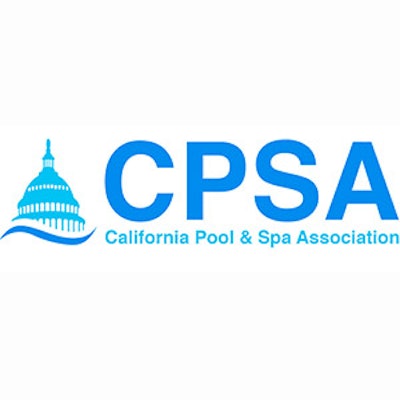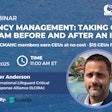
The CPSA posted the following update on the ongoing water crisis in California and the Association's efforts to protect industry jobs and interests:
It may be raining in Northern California, but water and water restriction issues are expected to continue to be big issues in 2016. That having been said, it appears the CPSA has been successful in addressing a major issue that was the root of the water use restrictions faced by the industry with public entities over the last two years.
California law, enacted in 2006, required every city and county to enact emergency water contingency plans by 2010. State law requires these plans to be renewed every 5 years and requires the Department of Water Resources (DWR) to develop guidelines. The guidelines developed by DWR are used by the cities and water districts throughout California to determine what restrictions and mandates will be included in their local plans.
Unfortunately, the swimming pool and spa industry was not paying attention when these guidelines were originally drafted pre-2010. Those guidelines included such suggestions as: prohibiting the filling or refilling of swimming pools and spas; prohibiting the refilling of more than 1 foot of a swimming pool; prohibiting the issuance of a new building permit for swimming pools and spas; prohibiting the use of public water to fill a pool or replace water lost to evaporation in an existing pool. These suggested restrictions are what many cities and water districts included in their emergency water contingency plans, and this is what CPSA has been fighting against city by city, water district by water district over the last two years.
Last August, John Norwood, Executive Director of the CPSA, made a presentation to the UWMP Guidebook Advisory Committee that is charged with drafting the content that will be used by local communities to develop their water contingency plans that are due to be updated July 1, 2016. At the time, the draft guidebook still contained a compilation of water use restrictions on pools, spas and hot tubs that were unwarranted. For example, Section 8.2.3 states: “Swimming pools may not be filled unless authorized by a permit. Only new swimming pools are allowed to be filled. Water may not be used to fill a pool or to replace water lost to evaporation.”
In his comments to the committee Mr. Norwood indicated that, “Just because the draft contains a compilation of some of the existing local water use restrictions does not make them right or fact based. To the contrary, these restrictions are highly discriminatory to the pool and spa industry, result in no real water savings and are contrary to long term water savings.”
CPSA filed both oral and written comments with the DWR requesting that the Advisory Committee strike the draft proposals and in their stead insert swimming pool management recommendations developed by CPSA members that will result in significant water savings while not putting the industry out of business. CPSA’s written comments and associated materials can be viewed here.
Just before the Christmas holidays, the DWR informed CPSA that the draft restrictions CPSA objected to were being dropped in favor of language that focuses on the use of covers for pools when not in use as the principle way to encourage water savings in the swimming pool, spa and hot tub industry.
This is a huge win for the CPSA and the industry. Once the 2016 Urban Water Management Plans are developed and implemented by local cities and water districts it is expected that the number and type of unwarranted water use restrictions the CPSA will have to respond to will be substantially reduced. Hopefully swimming pools and spas will no longer be targeted going forward in a manner that threatens the construction or remodeling of swimming pools, spas and hot tubs.
Winning is good, however, this fight demonstrates the importance for the industry to stay involved in the water community to protect the interests of its members. This presents a challenge as there are several state agencies with jurisdiction over water issues, some 300 public and private water districts and over 450 cities that can institute restrictions on the use of public water.
Covering these and other legislative and regulatory issues requires resources in terms of money and staff. Hence the need for the industry to support CPSA and continue to expand its membership. In 2015 CPSA added over 160 new members. However the challenge now is to continue this exciting trend by doubling our membership growth in 2016 and beyond. Will you help us?
CPSA, the California Pool and Spa Association, serves as the statewide public policy representative for the pool, spa, and hot tub industry.










































